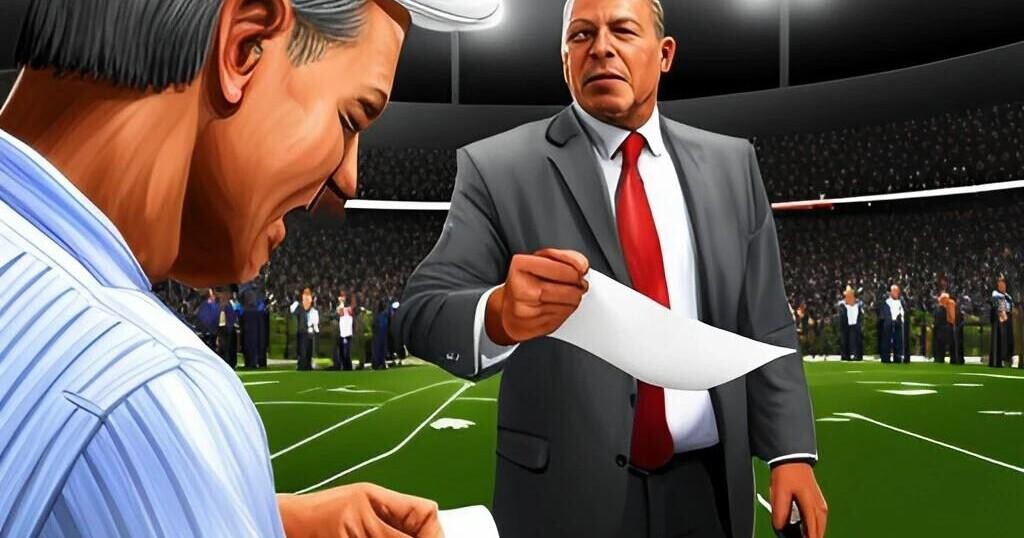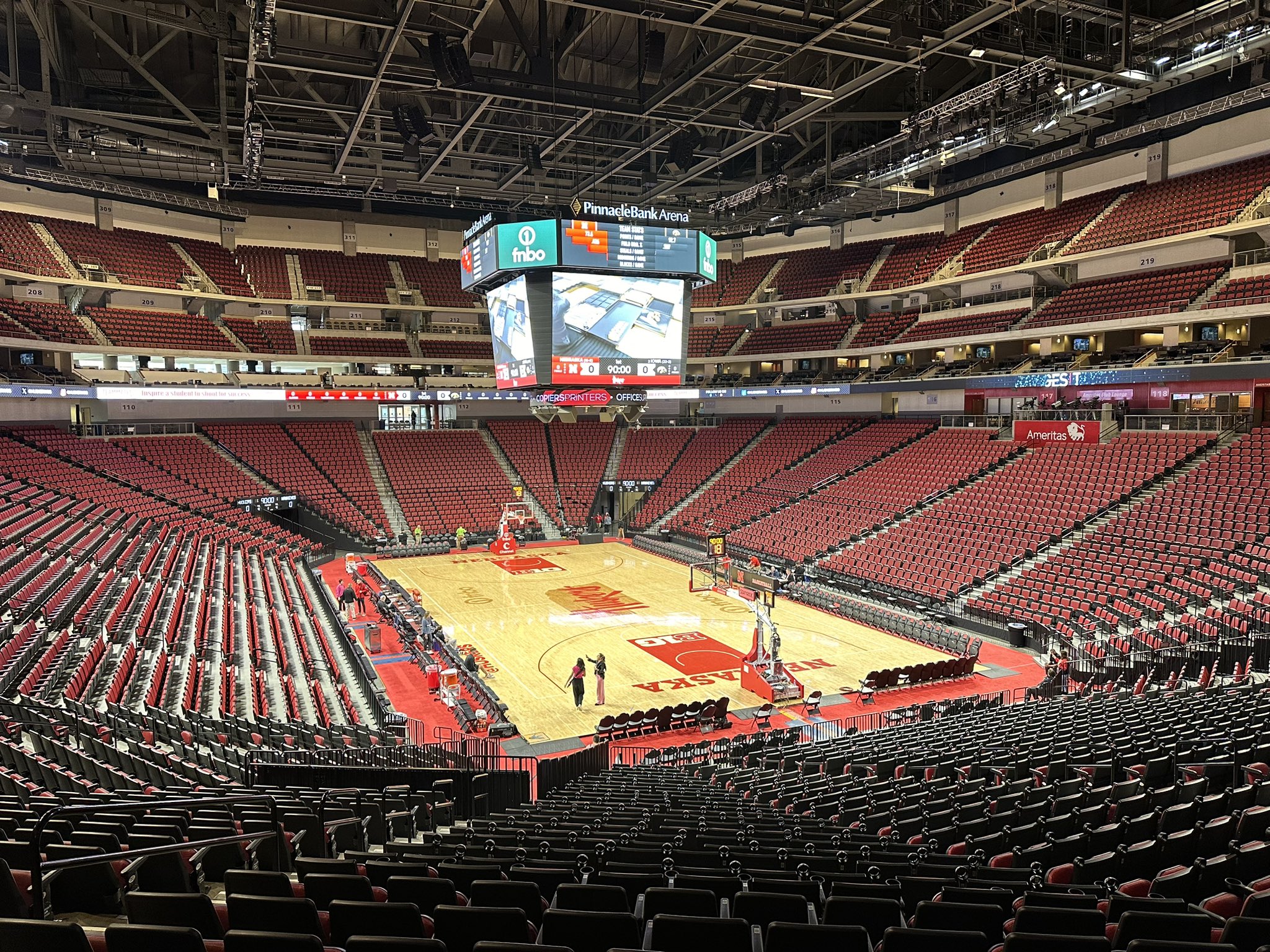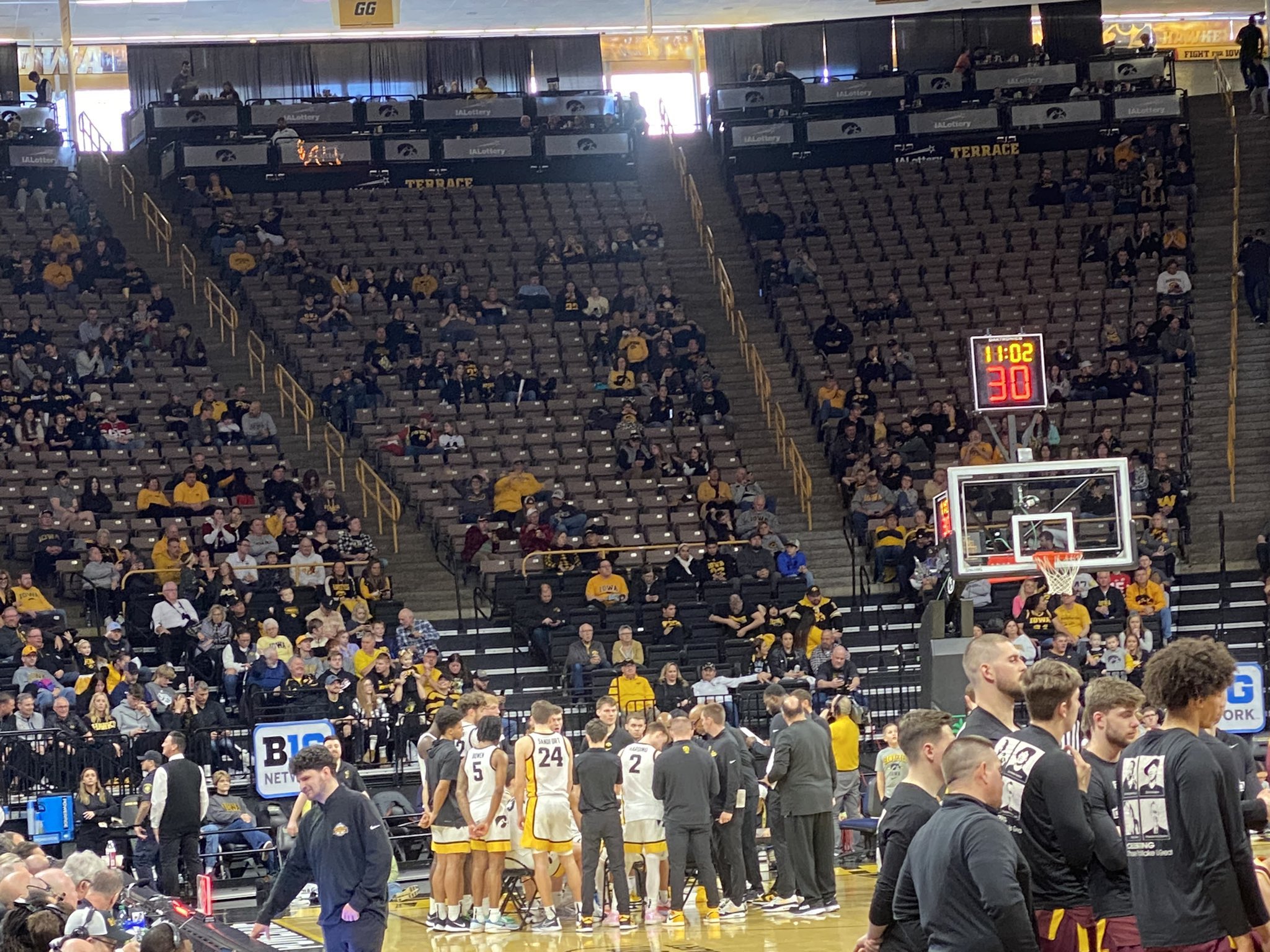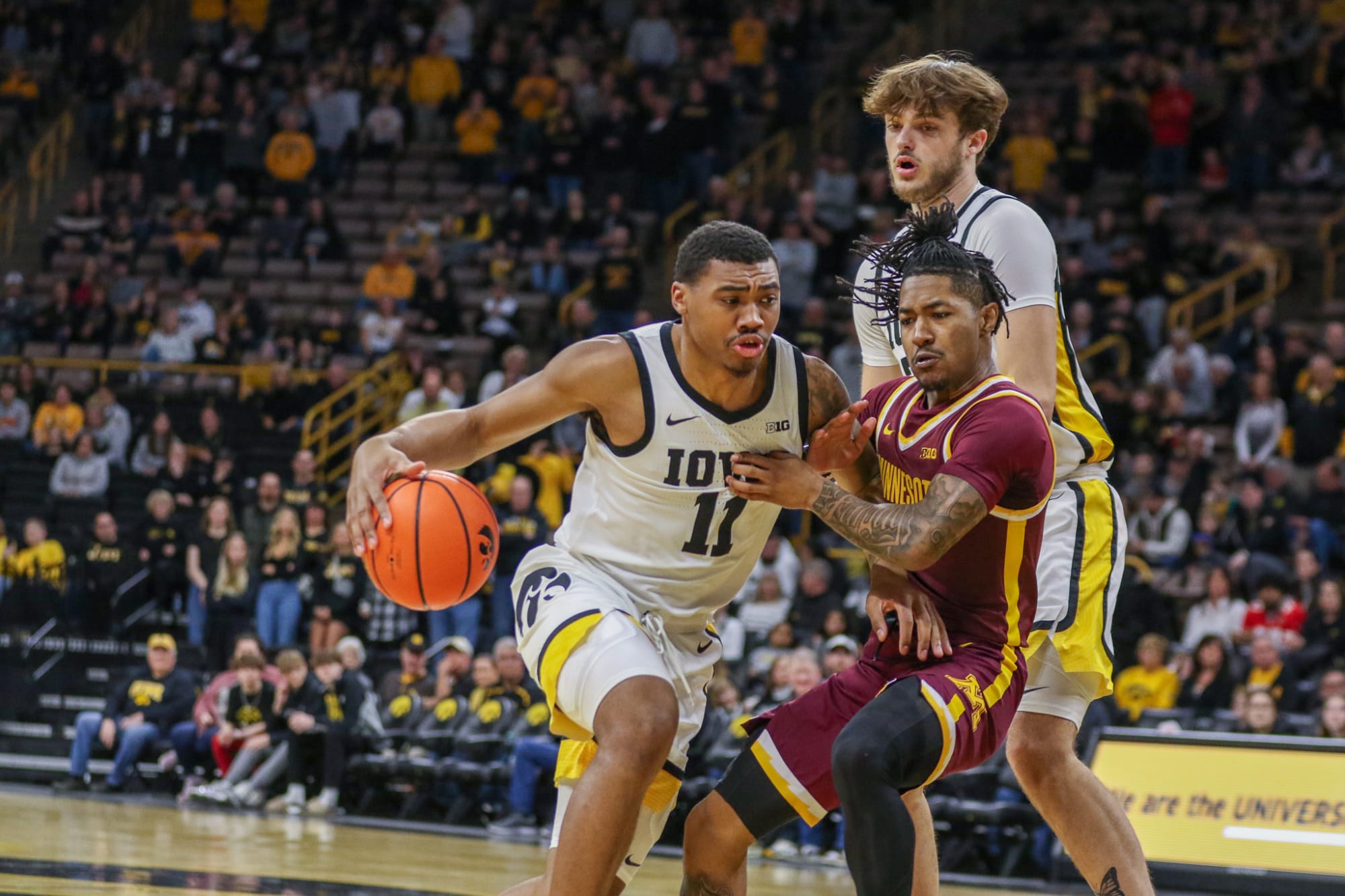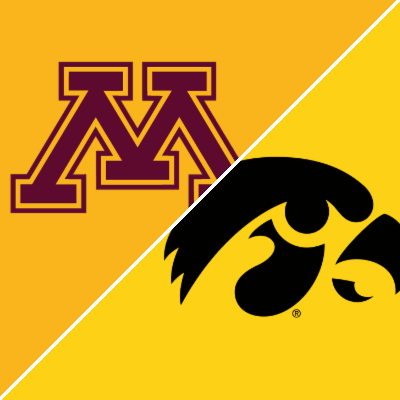April 30, 2024 Update:
Ave Attendance for MBB for the 2023-2024 season = 9,961.
Scanned Tickets Ave (actual butts in the seats) = 5,742 (38% of 14,998 Capacity)
Link to story:
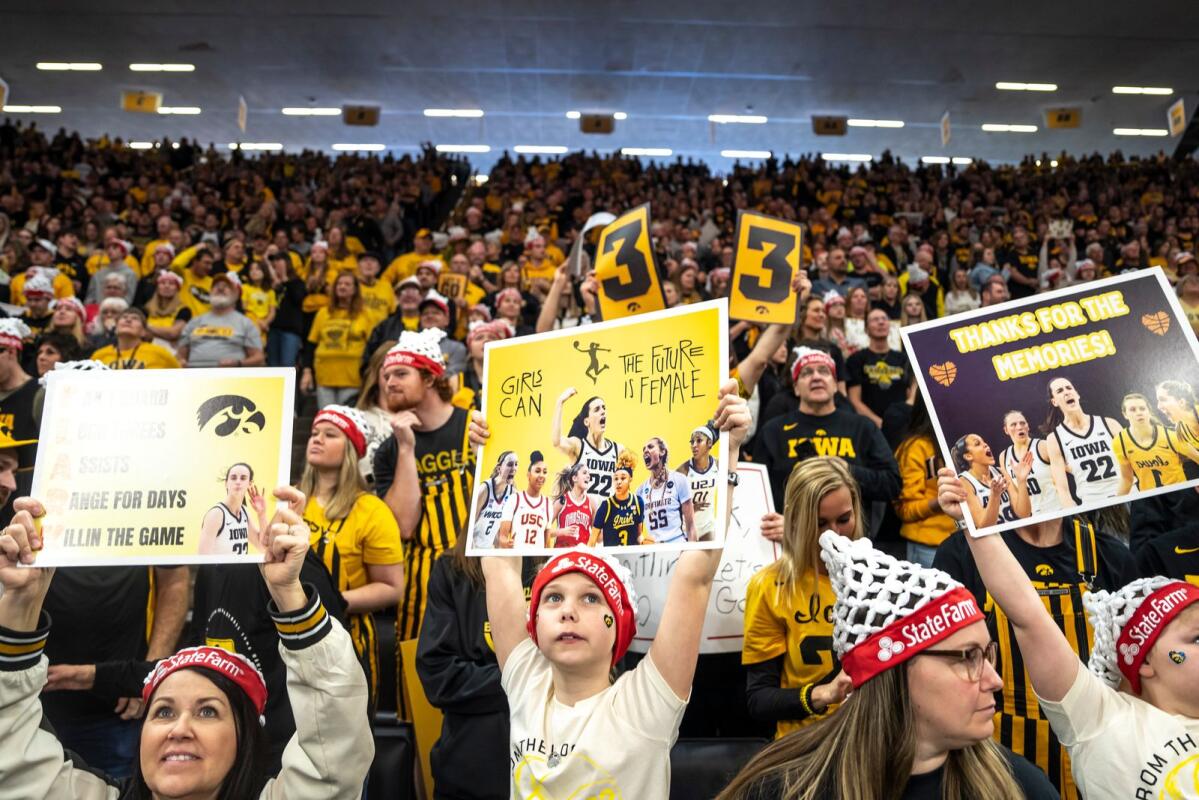
 www.thegazette.com
www.thegazette.com
ORIG (Feb 10) POST:
I have been saying for a while now that announced attendance and scanned tickets (actual butts in the seats) are 2 very different numbers. @HawkHoops80 questioned me on this, thinking the 2 numbers were the same.
As you will read, just 6,390 tickets have been scanned on average at Friday/Saturday/Sunday games (43% of Carver-Hawkeye Arena’s 14,998 capacity).
Good story from the Gazette from today:

John Steppe
Cedar Rapids Gazette
john.steppe@thegazette.com
Feb. 10, 2024 6:30 am
IOWA CITY — Fran McCaffery was hopeful for a “good” crowd last weekend against Ohio State.
One does not need to look far to understand why. It was a Friday night game. The 6 p.m. start time was helpful for any fans who had to drive back to Des Moines or other distant locales afterward.
It was a winnable game against an Ohio State team that had lost its previous three games.
Cost was not an issue either. Some ticket prices on StubHub before fees were cheaper than the signature Carver Cones that fans crave. After fees, it was still cheaper than the soft-serve ice cream in a souvenir bowl.
But, according to ticket-scanned data, more seats were empty than occupied for the Hawkeyes’ entertaining, 79-77, win over Ohio State.
It has been a consistent issue for the Hawkeyes this season.
Iowa’s listed attendance average of 9,712 fans per home game ranks 10th out of the 14 teams in the Big Ten. Data obtained by The Gazette via public records requests paints an even bleaker picture about men’s basketball turnout.
In Iowa’s13 home men’s basketball games so far — 12 regular-season games and one preseason exhibition — the Hawkeyes averaged 5,202 tickets scanned per game.
That equates to a mere 35 percent occupancy of 14,998-seat Carver-Hawkeye Arena.
A major winter storm in January led to a season-low 1,351 fans at the Iowa-Nebraska game, but even if you exclude that game, the average would be only 5,523.
The Ohio State game had 6,875 tickets scanned, according to Iowa Athletics.
The only time when the arena was more than two-thirds full — again based on tickets-scanned data, which looks at how many people are actually at the game versus how many bought tickets — was the Hawkeyes’ loss to then-No. 2 Purdue on Saturday, Jan. 20.
“You always want to grow your crowd,” Iowa athletics director Beth Goetz told The Gazette. “You want to make sure that you create an environment that everybody — your fans and your athletes — enjoy being in. If and when those are down a little bit, it’s our responsibility to look and figure out how we can try to address that.”
McCaffery believes Iowa fans “really support the team.”
“The key for us — and it’s been this way for a long time — is weekend games,” McCaffery said the day before the Ohio State game.
Weekend games are more amenable for fans traveling the roughly two hours from the Des Moines area, 30 minutes from Cedar Rapids or hour from the Quad Cities.
An 8 p.m. start time on a Tuesday, on the other hand, would mean someone traveling back to Des Moines might not make it home until midnight (while possibly having to work the next morning).
“We make it real easy for you to watch it on TV,” McCaffery said, “and they often don’t like the start times. During a midweek, you got issues with that. They show up on the weekends typically.”
To McCaffery’s point, weekend home games have experienced better turnout than weeknight home games. Iowa’s weeknight games have averaged 3,303 tickets scanned versus 6,390 on Friday, Saturday and Sunday games.
“We don’t want to use that as an excuse, but we do have to recognize that if you’re playing a weekday game at 8 p.m., then it’s going to impact who’s going to have the ability to attend,” Goetz said.
The 6,390 fans on average at Friday/Saturday/Sunday games still make up only 43 percent of Carver-Hawkeye Arena’s capacity.
Iowa men’s basketball also has benefited from a fair share of weekend games in 2023-24. Home games on Friday, Saturday or Sunday have outnumbered weeknight games, 8-5, so far this season. Three of Iowa’s four remaining home games are on weekends as well.
Other teams on campus and across the Big Ten have shown weeknight slots do not necessarily create an insurmountable challenge to convince fans to attend.
The weeknight-versus-weekend dilemma does not exist for Iowa women’s basketball, which has sold out every home game and seen third-party ticket prices rise well into the triple-digits. The Iowa women benefit greatly from having reigning National Player of the Year Caitlin Clark, though.
Looking at population demographics, the U.S. Census-defined Cedar Rapids-Iowa City Combined Statistical Area has 454,583 people, according to the 2022 estimate. Nebraska and Purdue are in significantly smaller Census-marked CSAs, yet boast significantly higher men’s basketball attendance numbers than the Hawkeyes.
A lack of postseason success appears to drive some apathy toward the men’s basketball program. Iowa has gone 24 seasons without advancing to the Sweet 16 after previously going through a two-decade stretch with five trips to the second weekend of the tournament.
But the regular-season results — the results of the games fans are choosing not to attend this year — have been largely positive in recent years for a program that is not a traditional men’s basketball powerhouse.
McCaffery, in his 14th season leading the Hawkeyes, is the program’s all-time leader in overall and B1G wins.
Iowa has earned NCAA tournament bids in 4 consecutive years — the longest streak for the program since the 1980s — and it would have been five straight tournaments, had COVID-19 not forced the cancellation of 2020 March Madness.
Iowa has won 20-plus games in eight of the last 11 seasons after previously going six straight seasons without 20-plus wins.
That’s not to mention the 2022 season, when Iowa won the Big Ten tournament title. The 26 wins in that season were the second-most in program history behind Tom Davis’ 30-win team in 1986.
This year’s apathy toward men’s basketball had some subtle warning signs as early as last season.
Results from Iowa Athletics’ end-of-year survey to ticket-buying fans, which The Gazette obtained via a public records request, indicated a 12-point drop in net promoter scale from plus-39 to plus-27. (The net promoter scale is a “measure of fan satisfaction and loyalty” that ranges from minus-100 to plus-100.)
The plus-27 score, while still considered “healthy,” was well below the plus-82 for men’s wrestling and plus-93 for women’s basketball.
Goetz anticipates the department doing something “a little more robust, a little more in depth” than a typical midseason or end-of-season survey after this season to gather more data and “understand more what the barriers are that exist.”
“There’s a real data analysis that has to happen to understand who is coming,” Goetz said. “When and where are they using their tickets? Where are those tickets coming from? And you really have to dial in and talk directly to your fans — those that are attending each game, and those that are not, perhaps season ticket holders in the past and haven’t renewed and try to figure out what those dynamics are.”
Some schools have moved into smaller, more intimate venues. Baylor, for example, moved earlier this year from the 10,284-seat Farrell Center to the 7,000-seat Foster Pavilion.
Goetz has previously signaled a desire to renovate 41-year-old Carver-Hawkeye Arena, saying last year that the arena has been a “great friend and home to us for about 40 years, and we need it to continue to be so for a few more decades to come.”
Iowa Athletics began a feasibility study last year, marking the first step toward a major renovation of Carver-Hawkeye Arena. Those plans are not yet finalized, but Goetz does “envision it’ll shrink just a little bit” from a seating capacity standpoint.
“Shrinking a venue a little bit and trying to make sure we meet the demand is likely an important way to think about things as we make those decisions,” Goetz said.
As for those who did show up for last Friday’s Ohio State-Iowa game, Goetz thought they were “animated, passionate, into the game.” But she also recognizes the need to improve attendance.
“We’re going to continue to do our best to make sure that we provide an environment that’s going to get them there, so we can support the program as best we can,” Goetz said.
Game vs Rutgers on Saturday, Jan. 6, 2024:


 www.thegazette.com
www.thegazette.com
Ave Attendance for MBB for the 2023-2024 season = 9,961.
Scanned Tickets Ave (actual butts in the seats) = 5,742 (38% of 14,998 Capacity)
Link to story:
How many fans turned out for Iowa WBB, MBB games in 2023-24
Basketball attendance at Carver-Hawkeye Arena in 2023-24 was a tale of two teams, as evident by tickets scanned data obtained by The Gazette via a public records request.
ORIG (Feb 10) POST:
I have been saying for a while now that announced attendance and scanned tickets (actual butts in the seats) are 2 very different numbers. @HawkHoops80 questioned me on this, thinking the 2 numbers were the same.
As you will read, just 6,390 tickets have been scanned on average at Friday/Saturday/Sunday games (43% of Carver-Hawkeye Arena’s 14,998 capacity).
Good story from the Gazette from today:
Iowa men’s basketball’s attendance woes are worse than official numbers suggest, lack quick fixes
Tickets-scanned data paints bleak picture of men’s basketball turnout at Carver-Hawkeye Arena
John Steppe
Cedar Rapids Gazette
john.steppe@thegazette.com
Feb. 10, 2024 6:30 am
IOWA CITY — Fran McCaffery was hopeful for a “good” crowd last weekend against Ohio State.
One does not need to look far to understand why. It was a Friday night game. The 6 p.m. start time was helpful for any fans who had to drive back to Des Moines or other distant locales afterward.
It was a winnable game against an Ohio State team that had lost its previous three games.
Cost was not an issue either. Some ticket prices on StubHub before fees were cheaper than the signature Carver Cones that fans crave. After fees, it was still cheaper than the soft-serve ice cream in a souvenir bowl.
But, according to ticket-scanned data, more seats were empty than occupied for the Hawkeyes’ entertaining, 79-77, win over Ohio State.
It has been a consistent issue for the Hawkeyes this season.
Iowa’s listed attendance average of 9,712 fans per home game ranks 10th out of the 14 teams in the Big Ten. Data obtained by The Gazette via public records requests paints an even bleaker picture about men’s basketball turnout.
In Iowa’s13 home men’s basketball games so far — 12 regular-season games and one preseason exhibition — the Hawkeyes averaged 5,202 tickets scanned per game.
That equates to a mere 35 percent occupancy of 14,998-seat Carver-Hawkeye Arena.
A major winter storm in January led to a season-low 1,351 fans at the Iowa-Nebraska game, but even if you exclude that game, the average would be only 5,523.
The Ohio State game had 6,875 tickets scanned, according to Iowa Athletics.
The only time when the arena was more than two-thirds full — again based on tickets-scanned data, which looks at how many people are actually at the game versus how many bought tickets — was the Hawkeyes’ loss to then-No. 2 Purdue on Saturday, Jan. 20.
“You always want to grow your crowd,” Iowa athletics director Beth Goetz told The Gazette. “You want to make sure that you create an environment that everybody — your fans and your athletes — enjoy being in. If and when those are down a little bit, it’s our responsibility to look and figure out how we can try to address that.”
McCaffery believes Iowa fans “really support the team.”
“The key for us — and it’s been this way for a long time — is weekend games,” McCaffery said the day before the Ohio State game.
Weekend games are more amenable for fans traveling the roughly two hours from the Des Moines area, 30 minutes from Cedar Rapids or hour from the Quad Cities.
An 8 p.m. start time on a Tuesday, on the other hand, would mean someone traveling back to Des Moines might not make it home until midnight (while possibly having to work the next morning).
“We make it real easy for you to watch it on TV,” McCaffery said, “and they often don’t like the start times. During a midweek, you got issues with that. They show up on the weekends typically.”
To McCaffery’s point, weekend home games have experienced better turnout than weeknight home games. Iowa’s weeknight games have averaged 3,303 tickets scanned versus 6,390 on Friday, Saturday and Sunday games.
“We don’t want to use that as an excuse, but we do have to recognize that if you’re playing a weekday game at 8 p.m., then it’s going to impact who’s going to have the ability to attend,” Goetz said.
The 6,390 fans on average at Friday/Saturday/Sunday games still make up only 43 percent of Carver-Hawkeye Arena’s capacity.
Iowa men’s basketball also has benefited from a fair share of weekend games in 2023-24. Home games on Friday, Saturday or Sunday have outnumbered weeknight games, 8-5, so far this season. Three of Iowa’s four remaining home games are on weekends as well.
Other teams on campus and across the Big Ten have shown weeknight slots do not necessarily create an insurmountable challenge to convince fans to attend.
The weeknight-versus-weekend dilemma does not exist for Iowa women’s basketball, which has sold out every home game and seen third-party ticket prices rise well into the triple-digits. The Iowa women benefit greatly from having reigning National Player of the Year Caitlin Clark, though.
Looking at population demographics, the U.S. Census-defined Cedar Rapids-Iowa City Combined Statistical Area has 454,583 people, according to the 2022 estimate. Nebraska and Purdue are in significantly smaller Census-marked CSAs, yet boast significantly higher men’s basketball attendance numbers than the Hawkeyes.
A lack of postseason success appears to drive some apathy toward the men’s basketball program. Iowa has gone 24 seasons without advancing to the Sweet 16 after previously going through a two-decade stretch with five trips to the second weekend of the tournament.
But the regular-season results — the results of the games fans are choosing not to attend this year — have been largely positive in recent years for a program that is not a traditional men’s basketball powerhouse.
McCaffery, in his 14th season leading the Hawkeyes, is the program’s all-time leader in overall and B1G wins.
Iowa has earned NCAA tournament bids in 4 consecutive years — the longest streak for the program since the 1980s — and it would have been five straight tournaments, had COVID-19 not forced the cancellation of 2020 March Madness.
Iowa has won 20-plus games in eight of the last 11 seasons after previously going six straight seasons without 20-plus wins.
That’s not to mention the 2022 season, when Iowa won the Big Ten tournament title. The 26 wins in that season were the second-most in program history behind Tom Davis’ 30-win team in 1986.
This year’s apathy toward men’s basketball had some subtle warning signs as early as last season.
Results from Iowa Athletics’ end-of-year survey to ticket-buying fans, which The Gazette obtained via a public records request, indicated a 12-point drop in net promoter scale from plus-39 to plus-27. (The net promoter scale is a “measure of fan satisfaction and loyalty” that ranges from minus-100 to plus-100.)
The plus-27 score, while still considered “healthy,” was well below the plus-82 for men’s wrestling and plus-93 for women’s basketball.
Goetz anticipates the department doing something “a little more robust, a little more in depth” than a typical midseason or end-of-season survey after this season to gather more data and “understand more what the barriers are that exist.”
“There’s a real data analysis that has to happen to understand who is coming,” Goetz said. “When and where are they using their tickets? Where are those tickets coming from? And you really have to dial in and talk directly to your fans — those that are attending each game, and those that are not, perhaps season ticket holders in the past and haven’t renewed and try to figure out what those dynamics are.”
Some schools have moved into smaller, more intimate venues. Baylor, for example, moved earlier this year from the 10,284-seat Farrell Center to the 7,000-seat Foster Pavilion.
Goetz has previously signaled a desire to renovate 41-year-old Carver-Hawkeye Arena, saying last year that the arena has been a “great friend and home to us for about 40 years, and we need it to continue to be so for a few more decades to come.”
Iowa Athletics began a feasibility study last year, marking the first step toward a major renovation of Carver-Hawkeye Arena. Those plans are not yet finalized, but Goetz does “envision it’ll shrink just a little bit” from a seating capacity standpoint.
“Shrinking a venue a little bit and trying to make sure we meet the demand is likely an important way to think about things as we make those decisions,” Goetz said.
As for those who did show up for last Friday’s Ohio State-Iowa game, Goetz thought they were “animated, passionate, into the game.” But she also recognizes the need to improve attendance.
“We’re going to continue to do our best to make sure that we provide an environment that’s going to get them there, so we can support the program as best we can,” Goetz said.
Game vs Rutgers on Saturday, Jan. 6, 2024:
Iowa men’s basketball attendance worse than official numbers suggest, lack quick fixes
Iowa is in the bottom-half of the Big Ten in average men’s basketball attendance. Tickets-scanned data, which The Gazette obtained via public records requests, paint an even bleaker picture.
Last edited:


